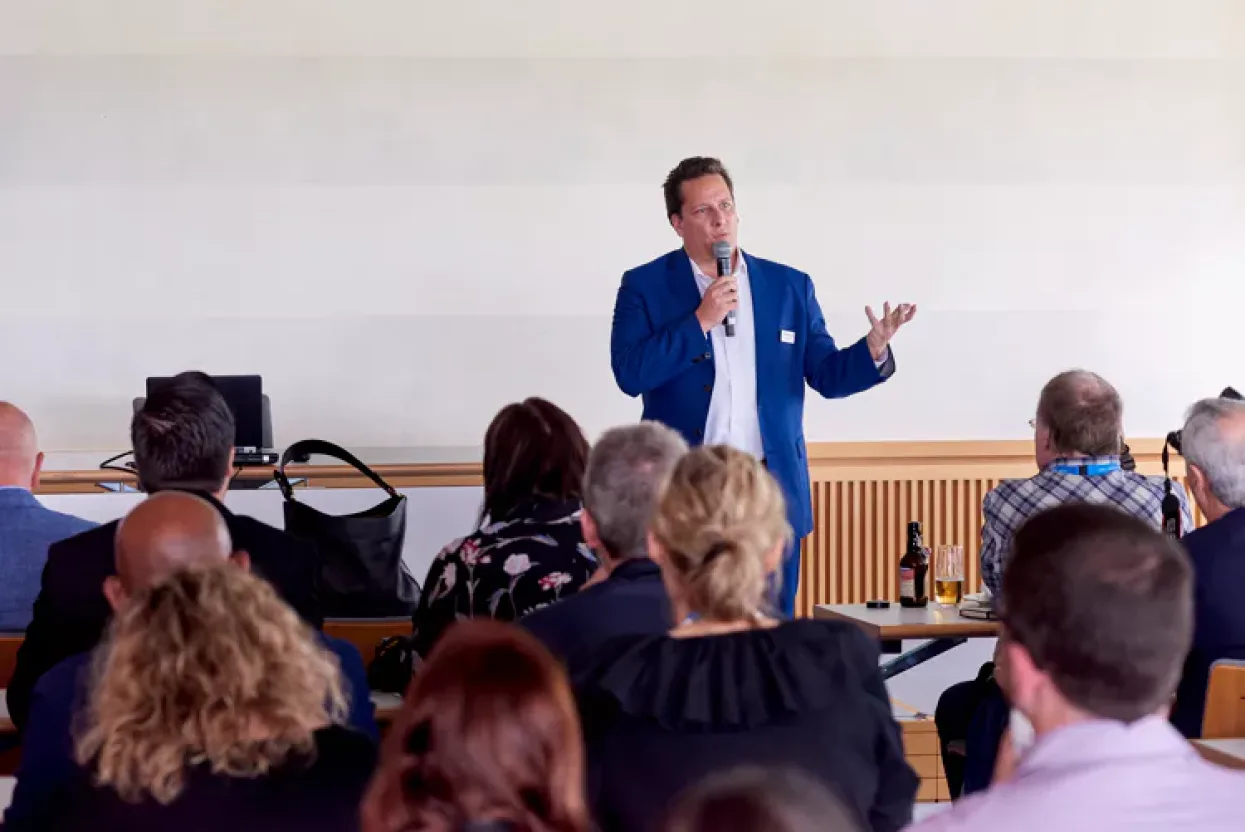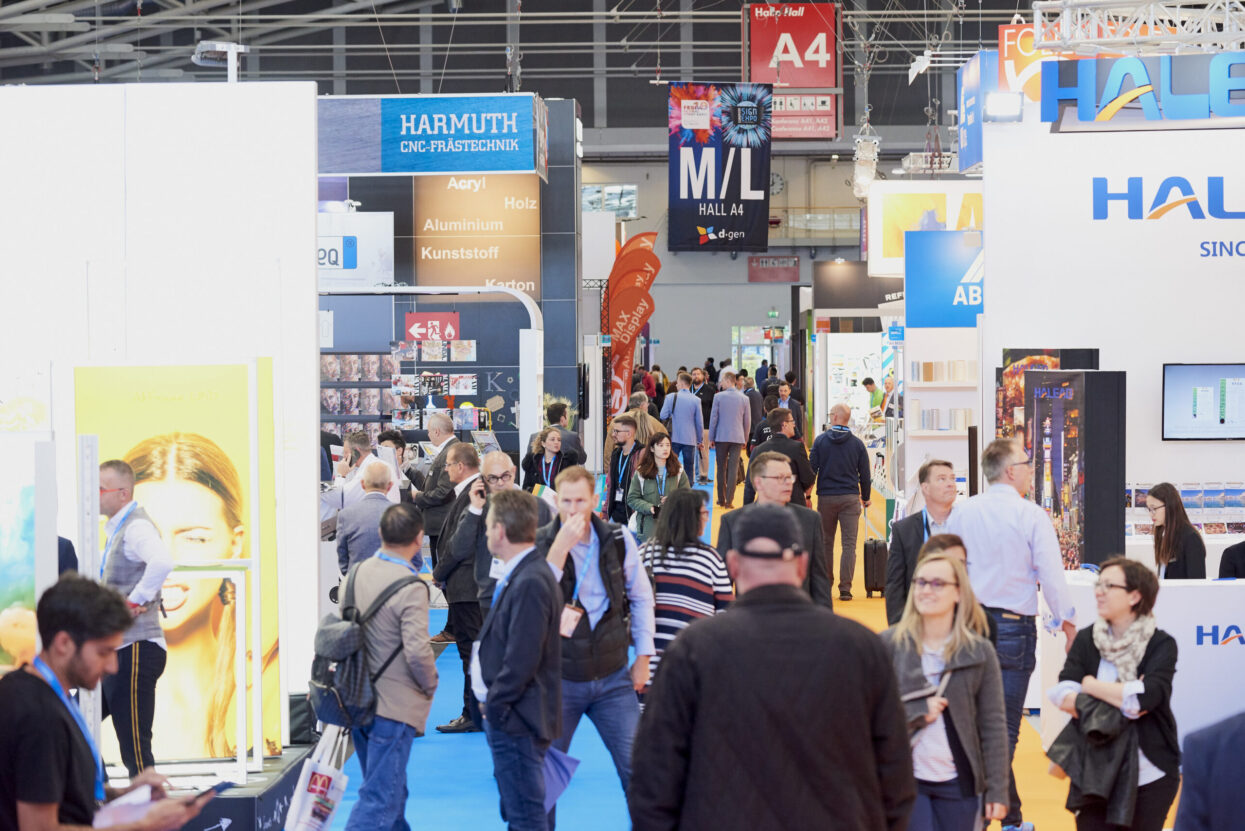
FESPA’s CEO, Neil Felton the last 10 years he has spent at FESPA and how the business and events have evolved to…now during COVID-19.
When I joined FESPA, one of the things that attracted me was the international scope of the role, and the chance to build on the early steps that had been taken to bring the FESPA brand to life with events outside Europe.
What I hadn’t fully appreciated was that I would have the privilege of plugging into an incredible, diverse network of print businesses all over the world – with fascinating nuances in their products, services and ways of doing business, defined by everything from geography and climate, to politics and economics.
One of the most impressive print businesses I visited early in my FESPA career was a gigantic vehicle graphics printing business in India. I was amazed, not only by the sophistication of the planning and production process, but also the materials and applications testing to ensured that the graphics, once applied, would resist the intense heat and humidity. It gave me a small window into the complexity of providing valuable business support to a global community of interest that has so much in common, but also a huge number of practical, linguistic and cultural differences.
When I arrived, the FESPA event calendar included the rotating cycle of FESPA Digital and ‘big’ FESPA events in Europe, and a relatively new show in Mexico. During the following decade, we’ve gone on to expand the portfolio across three more continents, with the successful launches of FESPA Brasil in South America, FESPA Africa in South Africa, and FESPA Eurasia in Istanbul, Turkey. In each case, we’ve worked hard with our national Associations and partners on the ground to make sure that the event meets the specific needs of the national or regional audience.
Of course, different regions are at varying stages of technology adoption, and certain applications are more dominant in some regions that others. In Turkey, for example, there’s a strong emphasis on textile printing, reflecting the strong heritage of garment and textile production in the region. In south-east Asia and China, I’ve been absolutely blown away by the scale of some of the textile production facilities I’ve visited. In Brazil, it’s been fascinating to observe that the market for outdoor advertising is constrained by legislation; in contrast, the printed instore décor and graphics in Sao Paolo are more vibrant than any I have seen anywhere in the world!
During this decade, the organisational structure of FESPA has also become truly global. FESPA has its roots in the 60’s, when a small group of Western European screen-printing associations banded together as a federation to collaborate more closely. Over the years, membership expanded to eastern Europe, and Associations from other continents joined the ‘family’ as associate members, but the balance of power was still tilted towards the ‘founder’ countries. This changed in 2012 when all 37 national Associations were placed on an equal footing in terms of voting rights. This diversity adds invaluable international insights for us a printer-centric organisation. And the Board of FESPA also reflects this, particularly since the appointment of Daniel Sunderland in 2019 to represent Latin America, bringing both a different geographical perspective and – for the first time on the Board – a specialist in garment printing.

One thing I find particularly motivating about our global events is our visitors’ enormous appetite to learn. Educational features at our shows are often ‘standing room only’, with printers who are hungry for knowledge, expertise and best practice from other regions. And I love the local flavour that each FESPA event has, from the traditions of the opening ceremonies, the food served in the catering areas, to the differences in visiting patterns. At our European events, we manage a crowd of visitors eager to get into the show when the doors open at 10.00am, while the halls quieten towards the late afternoon. Contrast this with our Latin-American events, which don’t open until midday, but where stands are still humming at 8pm and where business is most energetic on Saturdays!
As we’ve expanded the FESPA event calendar, we’ve also been able to grow our member community by embracing new speciality printing associations, for example in Mexico and South Africa, bringing fresh perspectives to our decision-making. But by far the biggest kick for me personally and professionally is seeing the difference our FESPA Profit for Purpose programme makes in some of the developing regions where we are present. Nothing has beaten the feeling I’ve had seeing the profits we’ve generated going towards the building of a printing college in Sri Lanka, or to support a development project for women entrepreneurs in a Johannesburg township. It’s become fashionable for commercial organisations to talk about their purpose, but it’s rare for a CEO to be able to say genuinely that the profit they generate is going straight back to support the community they serve.
As I write this in Spring 2021, our global community has been united in the most extraordinary and unexpected way – by a global pandemic that has left no business unchanged, anywhere in the world. It’s highlighted the fact that, while our live events continue to be central to the way we deliver value for our community, we also have many other platforms – our FESPA.com site, our FESPA World newsletter, our Club FESPA Online member hub for example – which play a vital role in keeping us all connected, learning, sharing ideas and, above all, helping one another.
As we emerge from this prolonged crisis, we’re brought together by the common need to recover and rebuild. And I feel confident that we will keep moving forward, because one of the things I cherish most about this global print community is that it’s relentlessly resilient, agile, creative and optimistic.